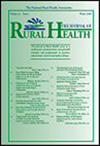Disparities in telehealth utilization between US rural and urban areas during the COVID-19 pandemic
Abstract
Purpose
During the COVID-19 pandemic, telehealth services were expanded across the United States to meet the increased demand and safety requirements of care. This observational study aims to understand rural-urban differences in telehealth utilization during the early part of the COVID-19 pandemic.
Methods
Individual-level data from the National Health Interview Survey 2020-2021 (age ≥18) were analyzed for this study. The Propensity Score Matching method with multivariable Ordinary Least Square was used to analyze 2 outcome variables—(1) having a medical appointment by video or phone in the past 12 months and (2) having a virtual one for reasons related to the pandemic. Event study models were analyzed to understand the trend of telehealth utilization throughout 6 quarters of the pandemic. Subgroup analysis by health insurance, age, sex, race, citizenship, and disability status was performed to identify underlying disparities between rural and urban residents.
Findings
Analysis reveals that rural respondents (N = 6,984) were 8.7 percentage points (P<.001) less likely than urban respondents (N = 40,207) to have a medical appointment by video or phone. Rural residents were 8.1 percentage points (P<.001) less likely to have had a virtual medical appointment because of reasons related to the COVID-19 pandemic than urban users. The event study showed that rural-urban telehealth utilization disparities persisted throughout the pandemic. Subgroup analysis revealed significant rural-urban disparities in telehealth utilization by demographic characteristics.
Conclusions
Results demonstrate that rural residents were less likely than urban residents to utilize telehealth services during the COVID-19 pandemic, highlighting concerns about access to care for rural residents.

 求助内容:
求助内容: 应助结果提醒方式:
应助结果提醒方式:


